Table of Contents
Cacao (cocoa, cocoa flavonoids, cocoa flavanols, cocoa extract) beans are a seed of the fruit of the Theobroma cacao tree.
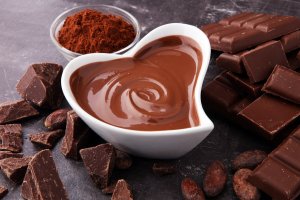 Cacao and dark chocolate contain high concentrations of polyphenolic compounds called flavanols.
Cacao and dark chocolate contain high concentrations of polyphenolic compounds called flavanols.
These flavanols, especially epicatechin and proanthocyanins, act as potent antioxidants.
Cocao flavanols provide numerous health and nootropic benefits including boosting cerebral blood flow, blood vessel elasticity and reduced blood pressure. And cacao is a strong anti-inflammatory.
Cacao stimulates the release of several major neurotransmitters. Resulting in improved mood while boosting learning and memory.
Cacao is antiaging, helping prevent neurodegenerative disease like Alzheimer’s and Parkinson’s. And reduces the risk of diabetes by decreasing insulin resistance.
Cacao is the natural source of chocolate. But what you may not realize is a lot of what you call chocolate has very little cocao content at all.
In this review you’ll find the type of cocoa that works best as a nootropic, the science, dosage, side effects and types to buy. We’ll even look into why some people snort cacao as a party drug.
Here we’ll explore how Cacao benefits your brain.
Cacao helps:
- Neurotransmitters: Cacao stimulates the release of phenylethylamine (PEA) which boosts focus and awareness. And anandamide (the bliss molecule) which helps you feel good. Cacao is a source of tryptophan which is the precursor to serotonin. And theobromine which boosts blood flow, is a stimulant, and may account for chocolate’s aphrodisiac qualities.
- Cerebral Circulation: Studies show that consumption of a flavanol-rich cacao drink increases blood flow for up to 2 hours in certain regions of the brain. Improving cognition, memory, and preventing neurodegeneration.[i]
- Antioxidant: Cacao beans are one of the richest sources of antioxidants around. Reducing free radicals that would normally cause oxidative damage in your brain and body.
What is Cacao?
Cacao (cocoa, cocoa flavonoids, cocoa flavanols, cocoa extract) comes from the bean of the Cocao tree (Theobroma cacao). A name derived from the Greek for “food of the gods”; from θεός (theos), meaning “god”, and βρῶμα (broma), meaning “food”.
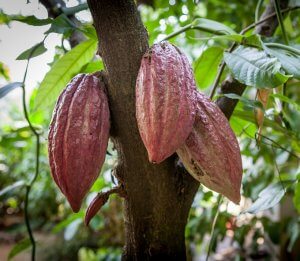
Native to Central and South America, cacao residue has been found in Olmec vessels found near Veracruz, Mexico dating from 1750 BC. Aztec Emperor Montezuma loved cocoa, calling it a “divine drink, which builds up resistance and fights fatigue. A cup of this precious drink permits a man to walk for a whole day without food”.[ii]
Cacao beans were brought back to Spain by the first European settlers in the 1500’s.
As a nootropic, cacao offers a host of brain benefits. It’s a source of tryptophan, anandamide, phenylethylamine, theobromine, magnesium, caffeine, vitamins, minerals, flavonoids, and is a prebiotic.
Cacao boosts cerebral blood flow, endorphins, learning, memory, focus, reduces free radical damage, suppresses cortisol, and reduces stress.
In fact, chocolate consumption leads to better cognition. One study found that the countries with the highest chocolate consumption produced a greater number of Nobel Laureates.[iii]
But not all chocolate is created equal. Here’s why …
Cacao vs Cocoa: What’s the difference?
“Cacao” and “Cocoa” are NOT the same thing. They’re both chocolate and start from the same place. But how they are processed make all the difference in their nootropic benefits.
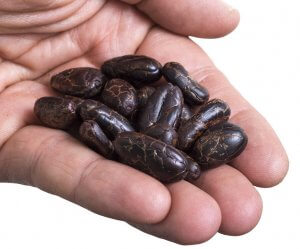
Chocolate in all forms start from the Theobroma cacao tree. Seed pods harvested from this tree are cracked open for the 30 – 40 cacao beans inside.
The cacao beans are then placed in piles or bins, often seeded with microbial bacteria (Cocobiota), and left to ferment for up to 7 days.[iv]
This fermentation process is key for developing the characteristic chocolate flavor.[v]
After fermentation, the cacao beans are dried, cleaned and the cacao nibs removed from their shell.
Cocoa refers to cacao that has been roasted. ALL cacao is roasted at varying degrees to enhance that distinct chocolate flavor. And to kill pathogens and bacteria.
THERE IS NO SUCH THING A “RAW COCAO”! No matter what the marketer tries to sell you.
Anything heated above 104 degrees F begins to lose its nutritional value. But the cacao fermentation process itself can heat up to 120 degrees.
The key is cocoa roasted at the lowest heat possible but still maintaining most of cacao’s nutritional value.
Dutch-pressed cocoa (dark cocoa) is cacao powder that has been processed using an alkalizing agent (potassium carbonate) to give it a darker color and milder taste. This is the form of cocoa often used in ice cream, hot cocoa, baking and chocolate bars.
Research has shown natural cacao powder (i.e. minimally processed) contains the highest ‘total antioxidant capacity’ (TAC).[vi]
Milk chocolate contains the least amount of cocoa solid and has the lowest TAC and procyanidin levels.
The alkalization process used in Dutch-processed cocoa also has far less procyanidin content.[vii]
Shells are removed from the cacao nibs using a winnowing machine. Some of the nibs are packaged and sold as is. Since cacao nibs come directly from the cacao tree, they contain the highest levels of flavanols. And provide the most nootropic benefit.
But most cacao nibs are ground into a chocolate liquor which is then processed into chocolate by mixing in cocao butter, sugar and other flavoring, and emulsifiers.
One study surveyed a broad range of chocolate- and cocoa-containing products marketed across the United States. The study included 3 or 4 of the top selling products within these categories; natural cocoa powder, unsweetened baking chocolate, dark chocolate, semisweet baking chips, milk chocolate, and chocolate syrup.
Researchers tested for percent fat (% fat), percent nonfat cocoa solids (% NFCS), antioxidant level by ORAC, total polyphenols, epicatechin, catechin, total monomers, and flavan-3-ol oligomers and polymers (procyanidins).
The study found a 5-fold variation on epicatechin and catechins between products. In decreasing order: cocoa powder > baking chocolate > dark chocolate and baking chips > milk chocolate > chocolate syrup.[viii]
Meaning cacao powder provided the most nootropic benefit, and chocolate syrup the least.
How does Cacao work in the Brain?
Cacao boosts brain health and function in several ways. But two in particular stand out.
- Cacao improves mood. Cacao stimulates the release of endorphins in your brain.[ix] It contains tyrosine which is a precursor to dopamine, and tryptophan which is a precursor to serotonin. All neurotransmitters contributing to mood.
Researchers at the Neuroscience Institute in San Diego found that chocolate blocks the breakdown of anandamide which helps increase happiness levels.[x]
And Dr. David Lewis of the Mind Lab (funded by Cadbury) found that chocolate provides, “A buzz that, in many cases, lasted four times as long as a most passionate kiss”.[xi]
- Cacao boosts memory. The flavonoids in cacao cross the blood-brain barrier and accumulate in the hippocampus. An area of the brain involved in learning and memory. Scientists believe flavanols directly interact with cellular cascades yielding expression of proteins that promote neurogenesis, neuronal function, and brain connectivity.
And flavanonols improve cerebral blood flow and the creation of new blood vessels (angiogenesis) which provide long-term protective effects on cognition and behavior.[xii]
Cocao contains caffeine which in low doses improves memory, mood, and concentration.[xiii]
A University of Oslo team conducted a cross-sectional study with 2,841 people to examine the relation between intake of flavonoids from chocolate, wine, and tea and cognitive performance.
The researchers found that subjects who consumed more chocolate, wine, and tea (all three) had higher cognitive test scores than those who did not.
The scientists concluded that intake of these foods and cognition was dose dependent. With the maximum effect for chocolate and wine.
The study authors said, “a diet high in some flavonoid-rich foods is associated with better performance in several cognitive abilities in a dose-dependent manner”.[xiv]
They also pointed out that dark chocolate contains a greater amount of flavonoids per serving than tea and red wine. Which increases blood flow to gray matter in the brain. Reducing the risk of dementia and stroke.
How things go bad
Most of us do not get the phytonutrients from food our body and brain need every day. These nutrients contribute to neurotransmitter release, better blood flow, and neuroprotection. One of the main nutrient functions is preventing oxidative damage from free radicals.
A deficiency in antioxidants contributes to:
↑ Chronic inflammation
↑ Accelerated aging
↑ High cholesterol and triglycerides
↑ Increased belly fat
↑ Insulin resistance
↑ Mitochondrial insufficiency and dysfunction
↑ Neurodegeneration
Cacao is one of the most potent antioxidants available. It has more antioxidant activity than the majority of nootropics that fight free radicals reviewed here on Nootropics Expert.
Cacao benefits
Most of us love chocolate because it tastes great and we love the way it makes us feel.
And minimally processed chocolate (80% cacao or above) is one of the best nootropics that anyone can easily find.
Cacao is a source of tryptophan, the precursor to the neurotransmitter serotonin which puts us in a good mood.
Cacao stimulates the release of phenylethylamine (PEA) which in turn releases norepinephrine and dopamine. Producing the euphoric effect often associated with a “runner’s high”.
Cacao boosts the release of anandamide which is also known as the “bliss molecule”.
Flavanol-rich cacao improves blood flow to the brain which boosts oxygen and nutrient delivery to brain cells. Resulting in better memory and processing speed.
Cacao contains more antioxidants than other “superfoods” including acai, blueberries, tea, and pomegranate.[xv]
Cacao helps relieve stress by suppressing the release of cortisol. And providing a substantial amount of magnesium which improves memory, focus, mood, and sleep.
Dark chocolate reduces your craving for sweet, salty, and fatty foods. And chocolate loves Bifidobacterium which makes it a great prebiotic.[xvi]
Research has found that seniors who ate more dark chocolate were less likely to develop dementia.
How does Cacao feel?
Tripping on chocolate. People actually snort raw cacao. And report a smooth, invigorating, easy-going kind of high. A “rush of well-being flooded over my body”.
But then again, the seeds of the cacao tree were originally considered to have divine properties. “Food of the gods” ring a bell?
Minimally-processed cacao releases a potent amount of endorphins which can leave you feeling euphoric. Especially while enjoying some EDM.
Cacao also contains phenylethylamine (PEA) which leads to tyrosine which leads to dopamine. Fueling your brain’s pleasure and reward system.
The magnesium in cacao relaxes you. And the epicatechin in cacao boosts blood flow which means you can go faster and further. More oxygen to muscles allow you to make the most of whatever it is you love to do.[xvii]
Sober has never been more fun. People are even doing cacao in clubs. You can party until dawn. With no hangover and no regrets.
Even if you’re not willing to try snorting some cacao , minimally-processed cacao (sometimes called ‘raw’ cacao ) will improve your mood.
Cocao stimulates the release of anandamide, serotonin, and phenylethylamine. All neurotransmitters that can boost your mood.
Cacao Clinical Research
It’s easy to get excited about the health benefits of chocolate. We often see headlines about the latest chocolate discovery.
But here’s the thing. The studies investigating the links between chocolate and great health are not using the type of chocolate you find in the checkout line at the supermarket.
Easily lost in translation or a sneaky attempt to sell more magazines. But these scientists are using cocao and not highly processed chocolate.
Minimally processed cacao still tastes great. So keep in mind you won’t get the nootropic benefits you’d expect from cocao with a box of Godiva chocolates.
Cacao improves learning & memory
Cacao flavonoids and their metabolites cross the blood-brain barrier. And go to areas in your brain crucial for learning and memory. Including the hippocampus, cerebral cortex, cerebellum, and striatum.
Research shows that cacao flavonoid directly interacts with signaling cascades that are crucial for triggering gene expression and protein synthesis for long-term potentiation (LTP) which is critical for long-term memory formation.
Cocao flavanols have been shown to significantly increase cerebral blood flow. Providing neuroprotection and boosting the glucose and oxygen needed to power energy-hungry mitochondria.
A study published in ‘Frontiers in Nutrition’ analyzed dozens of cacao -flavanol studies on cognition. And concluded that results are primarily dose-dependent with best results from long-term, daily use.
The team concluded that the evidence to date shows cacao flavanols help boost general cognition, attention, processing speed, and memory.[xviii]
Cacao improves mood
A 2012 study examined the immediate and long-term effects of cacao polyphenols on cognition and mood.
In this randomized, double-blind study, 72 healthy middle-aged participants received a dark chocolate drink mix standardized to contain 500 mg, 250 mg, or 0 mg of polyphenols once daily for 30 days.
Participants were tested at the beginning of the study, at 1, 2.5, and 4 hours after a single dose. And again after receiving 30 days of treatment.
The researchers concluded that a high dose of cacao polyphenols improved calmness and contentedness.[xix]
Cacao prevents dementia
A study in France followed 1,367 subjects over 65 years old for 5 years to determine if flavonoid intake influenced neuroprotection. The team concluded that “the intake of antioxidant flavonoids is inversely related to the risk of dementia”.[xx]
Another double-blind study on cacao , cognition and aging found that 90 subjects with mild cognitive impairment had significantly better cognitive function including verbal test scores after consuming cacao flavanols for 8 weeks.
This study confirmed earlier reports that those who consumed higher doses of cacao flavanols (990 mg and 520 mg daily) did better than those who used less (45 mg).[xxi]
And many experts are now saying that Alzheimer’s Disease is really Type-3 diabetes because insulin deficiency and insulin resistance is behind Alzheimer’s-type neurodegeneration.[xxii]
A trial with 15 healthy subjects were assigned to consume 100 grams of dark chocolate containing about 500 mg polyphenols, or 90 grams of white chocolate which doesn’t contain polyphenols, for 15 days.
The researchers concluded that dark, but not white chocolate decreases blood pressure and improves insulin sensitivity in healthy persons.[xxiii]
Cacao Recommended Dosage
Recommended dose of Cacao flavanols for cognitive benefit is 500 – 1,000 mg per day.[xxiv]
The challenge is figuring out flavanol levels in the cacao or dark chocolate you are buying. A few manufacturers declare flavanol amounts in mg per capsule or dose in the ingredients label.
Cocao nibs and cacao powder are the purest and contain the highest levels of flavanols. But pure cacao tends to be bitter. So look for capsules if you can’t stand the taste of dark chocolate or cacao .
Milk negates the advantage of eating chocolate because it interferes with the absorption of the antioxidants in chocolate. This includes no health benefit from eating milk chocolate.[xxv]
Cacao Side Effects
Cocao and dark chocolate may cause acne, heart burn or gastroesophageal reflux disease (GERD).
The phenylethylamine in chocolate may cause migraines in some people.
Weight gain is a concern when consuming solid dark chocolate regularly.
Cocao is a stimulant so avoid taking it later in the day if you don’t want it to interfere with sleep.
Some drugs may increase the effects of caffeine present in cacao because they decrease the metabolism or clearance of caffeine. Including drugs like disulfiram, estrogens, fluconazole, mexiletine, oral contraceptives, quinolone antibiotics.
Cocao may increase the risk of adverse reaction when used with clozapine because it inhibits this drug’s metabolism.
1.5 oz or more of raw cacao with MAOIs or other antidepressant meds may cause a hypertensive crisis, or lead to Serotonin Syndrome.
The oxalic acid in cacao inhibits absorption of calcium in your body. So larger amounts of cacao could cause problems for those prone to kidney stones or other calcium absorption issues.
NOTE: dogs, parrots and horses should not eat cacao or chocolate because they lack the necessary enzymes to metabolize theobromine in cacao . Chocolate or cacao can kill your pet. Cat’s have about half the sensitivity to cacao and can also be deadly.
Heavy Metals in Cacao
In 2023, Consumer Reports tested 28 dark chocolate bars for lead and cadmium. They used used California’s maximum allowable dose level (MADL) for lead (0.5 micrograms) and cadmium (4.1mcg).
Consumer Reports found that 25 out of the 28 bars tested, if you ate one ounce or more for each of those 25 dark chocolate bars, you would consume over the heavy metal limit for lead or cadmium. And 5 of those bars were above toxic levels for both cadmium and lead.
The bottom-line is if you are looking for the substantial nootropic benefits by using dark chocolate or cacao, it is wise to check Consumer Reports list for safe brands of cacao. Or check the Certificate of Analysis for heavy metals if available from the manufacturer before consuming each and every brand of dark chocolate.
Types of Cacao to buy
Less processed cacao retains more of the nootropic benefits of flavanols. And the converse is true. The more cacao is processed the less cognitive benefit you experience.
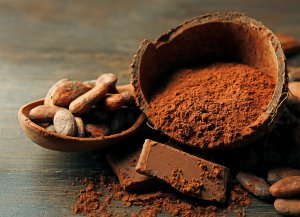
So a good rule of thumb, darker chocolate that is 85% cocoa or more is best. The darker the better.
Milk chocolate and ‘white chocolate’ does NOT meet these requirements and provide no nootropic benefit.
You can use pure cacao powder found in the baking section of your local supermarket. If you can’t stand the taste, then get a capsule machine and make capsules.
Avoid “Dutch-processed chocolate” because most of the goodness found in the cocoa is processed out.
The chocolate maker Mars, Inc. has developed a process called Cocoapro® which extracts cacao flavanols from fresh cacao beans. Preserving them in the highest concentration available.
So search for a cacao extract using Cocoapro® in their product to be sure you know exactly how many flavanols are in each capsule.
The U.S. Department of Agriculture Database of Flavonoid Content reports that unsweetened baking chocolate has 206 mg of flavanols per 100 grams of chocolate. And dark chocolate has half that amount.
Nootropics Expert Recommendation
 Cacao flavanols 500 – 1000 mg per day
Cacao flavanols 500 – 1000 mg per day
We recommend using Cacao as a nootropic supplement.
Your body does not make Cacao on its own. So to get its benefits you must take it as a supplement.
When selecting a cacao or dark chocolate supplement, the higher percentage of cacao the better. Raw or minimally processed cacao powder is best, with dark chocolate containing a minimum of 80% cacao a close 2nd.
Cacao is especially helpful for boosting cerebral blood flow. Providing more energy along with a boost in learning and memory.
The flavanols in cacao will put you in a better mood. And many find that dark chocolate works great as an aphrodisiac.
Long-term use of cacao as a nootropic supplement has been shown to help prevent neurodegenerative diseases like Alzheimer’s and Parkinson’s.
You can safely take up to 1,500 mg of Cacao flavanols daily if needed. But dosed earlier in the day because cacao acts as a stimulant.
Absorption of cacao is greatly reduced when consumed with dairy. So forget about mixing cacao powder in a drink containing milk if you want to experience its nootropic benefits.

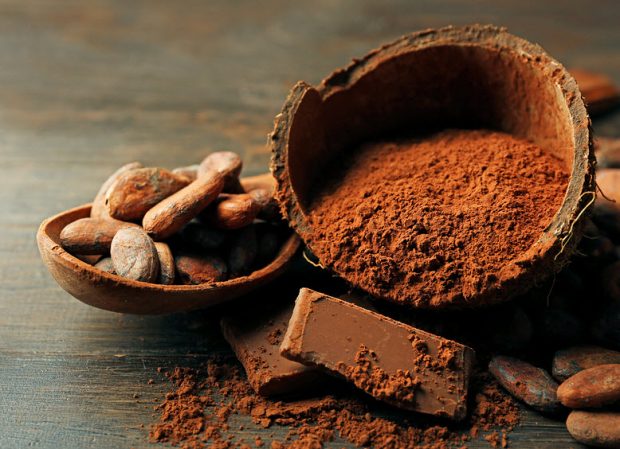
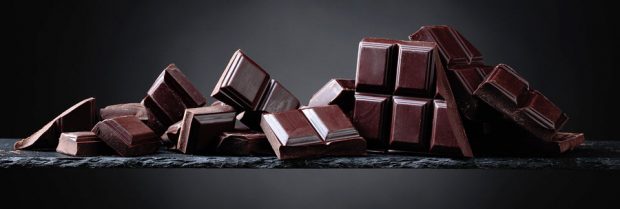
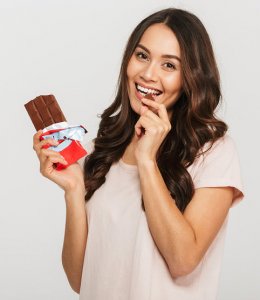
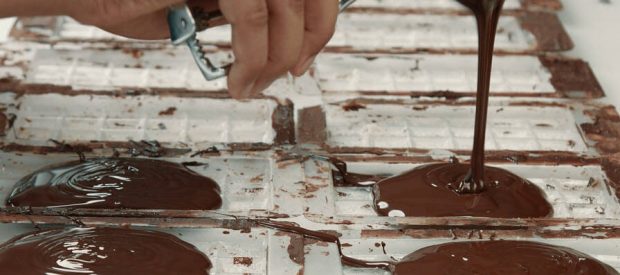





Join The Discussion - 80 comments
Henry
August 29, 2025
Hello David.
Does cacao have a positive influence on testosterone?
David Tomen
August 29, 2025
Dark chocolate has been shown to help increase both free and total testosterone. Not a lot but a little. And the flavonoids in dark chocolate help dilate blood vessels for better blood flow.
Jacob
September 7, 2024
Any idea on the percentage of PEA in raw cacao powder? And/or any kind of cacao supplement for that matter? There is no information or standardized percentage of phenylethylamine on any cacao supplement label I have seen so far. Just wondering if I can get the PEA effects from a tablespoon of high quality cacao powder… perhaps with some Oatstraw for MAO-B inhibition too.
David Tomen
September 8, 2024
Jacob, I highly doubt there is any way to measure the percentage of PEA in Cacao. Because I imagine it varies based on where it is grown and harvested, and how it is processed.
K
February 29, 2024
Hey David, any thought to doing an article on Theobromine itself? I’ve seen it being sold as a supplement lately and couldn’t resist trying it. (I mean, I love chocolate, but something in it, whether the sugar or the caffeine or both or neither♀️ really aggravates my Gerd). It really seems to help with my cognition and mood in general, my energy a little, and especially my difficulties with task initiation and food impulsivity. I like it enough that I came here to try and get some guidelines on dose, cycling, etc and was surprised to not find anything. Would love to hear your take on it! Thanks!
David Tomen
March 1, 2024
I researched Theobromine with the intention for writing a review. But abandoned the idea because I could not find enough evidence of its benefits as a nootropic for brain support.
K
July 27, 2024
Aw. Too bad. Thanks for looking into it.